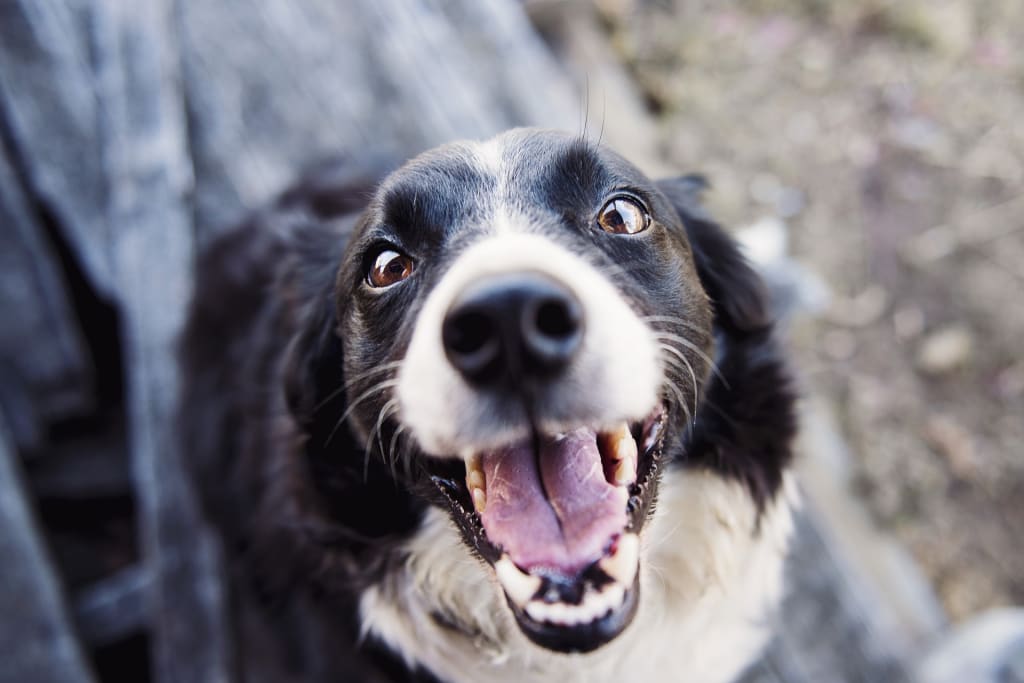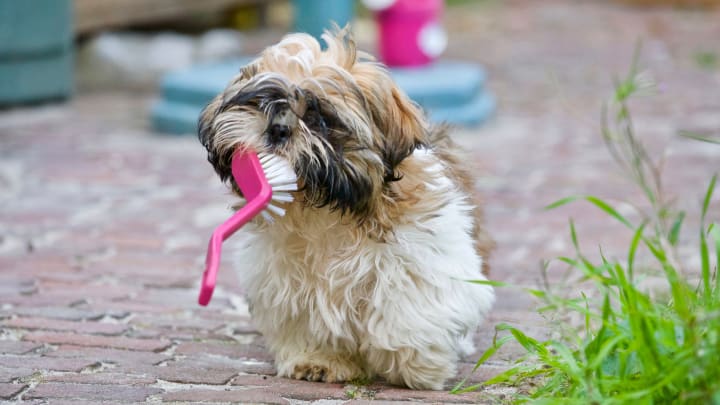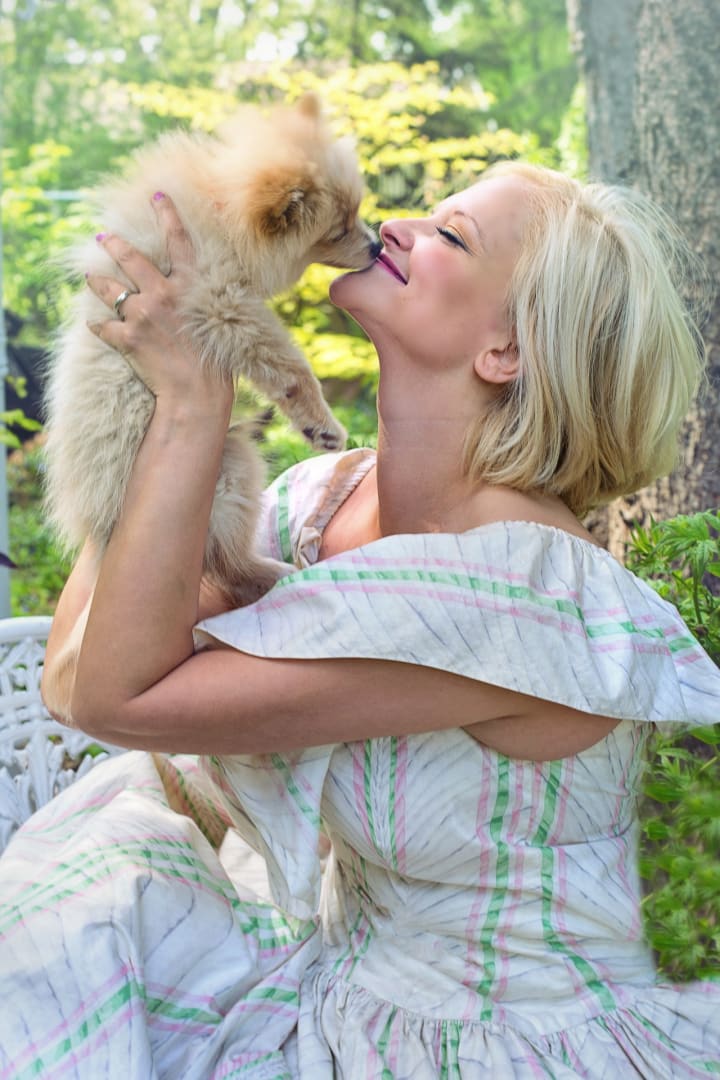Things to Know About Your Pet's Dental Health
Are you keeping up with your pet's dental health? Here's the scoop on how to keep your pet's smile sparkling.

Let's admit it: our pets are cherished members of our family. We buy them the best foods, let them sleep in our beds, and take them on vacations. We fret about their health and are worried sick when they become ill. Then why do so many pet owners neglect our pet's dental health? According to Nationwide, a top provider of pet insurance, 80% of dogs have signs of dental disease by age 3! Many of us know how excruciating a toothache can be, and it is no different for our four-legged friends. However, dogs and cats do not often clearly communicate to us that they are hurting. It is essential to learn how to prevent oral health problems in our pets and recognize when they need veterinary dental care. Keep reading for some tips to keep their pearly whites in top shape.
It's not just about bad breath!

Establish a brushing regimen early.

Just like learning how to train your dog, there are several steps in getting your pet to accept brushing. Start by letting your pet lick the toothpaste off the brush for a few days. Then gradually let them get accustomed to a soft brushing action. You don't need to scrub hard. A few quick swipes down each side of the mouth on the top and bottom jaws is sufficient. While brushing, shower your pet with praise. When you are finished, reward them with their meal or treat. Soon brushing will become part of their daily routine. Some adult dogs may be a little harder to train than puppies. If your pet absolutely refuses to cooperate for tooth brushing, you can try using daily dental wipes, powders, water additives, or chew bones. Look for products with a seal of acceptance from the Veterinary Oral Health Council.
Regular veterinary checkups are the first step in recognizing a dental problem.

Routine veterinary visits aren't just for vaccines. Your veterinarian performs a complete examination of your pet, and this should include a good look in the mouth. Your vet will check for signs of periodontal disease, which includes tartar buildup or calculus (hardened brown material that forms due to bacteria or plaque), gingivitis, loose teeth, infection, and other oral lesions. Based on this exam, they will advise whether a veterinary dental cleaning is recommended. You should also monitor for sign of a dental problem at home. Symptoms may include bad breath, dropping food, chewing abnormally, refusing to eat at all, salivating excessively, and bleeding from the mouth or gums. If you observe these signs, schedule an appointment with your veterinarian right away. Unfortunately, animals with bad teeth often hide symptoms until the dental disease is very advanced. Many pets will continue to eat despite oral pain and loose teeth. It is important to keep up with routine professional examinations to catch problems early.
Veterinary dental procedures are essential for diagnosing and treating periodontal disease.

Animals don't open up and say "aaaah" while their teeth are poked, prodded, and cleaned. Many people even require sedation for the dentist! Veterinary dental procedures for pets must be done under general anesthesia. Your vet will likely recommend blood work to make sure your pet is healthy enough for anesthesia. While any anesthetic procedure can be a scary endeavor, it truly is the best way to ensure your pet's dental health needs are addressed.
During the procedure, your vet may identify a tooth that requires removal due to severe disease. Some pets may need several teeth extracted. This sounds daunting, but your pet will feel much better when painful teeth are removed. They will be able to eat better without them! In some cases, advanced procedures such as root canals can save a bad tooth from extraction. Your vet may refer you to a board-certified veterinary dental specialist for this level of care.
COHATs are recommended yearly for most pets, depending on the severity of disease. Small breed dogs are more prone to oral health problems and their owners should plan for regular dental care over their lifespan. This can become costly. It is recommended to obtain pet insurance early in your pet's life, as several plans will cover these procedures. Many veterinary hospitals will offer dental specials throughout the year. This often happens in February, which is Pet Dental Month. Check out the best pet insurance companies, then ask your veterinarian for more details.
Don't forget about your feline family members.

Cats get dental disease too! Compared to their canine counterparts, they are not as likely to cooperate with daily brushing and they don't tend to visit the vet as frequently. Cats are also very adept at hiding signs of oral pain. As a result, a dental problem is often very advanced before it is identified. Cats are susceptible to very painful resorptive lesions in their teeth and inflammatory conditions in their mouth and gums. This can adversely affect their overall health, especially if they stop eating due to pain. Don't forget to get that kitty to a vet for regular oral health exams!
Good dental care improves your pet's quality of life.

We all want our pets to live a long life, but also their best life. Our pet’s dental health plays an essential role in their quality of life. Painful, diseased, or loose teeth make them feel crummy and can lead to poor overall health. Not to mention that special bond we have with our pets is strengthened when their breath doesn't smell terrible! To keep your pet happy and healthy, establish a good oral health routine now and see your vet for regular exams and dental cleanings.
About the Creator
Izzy Erlich
Upstate New Yorker, who loves to travel to Colorado and Vancouver. Certified Yoga instructor.






Comments
There are no comments for this story
Be the first to respond and start the conversation.